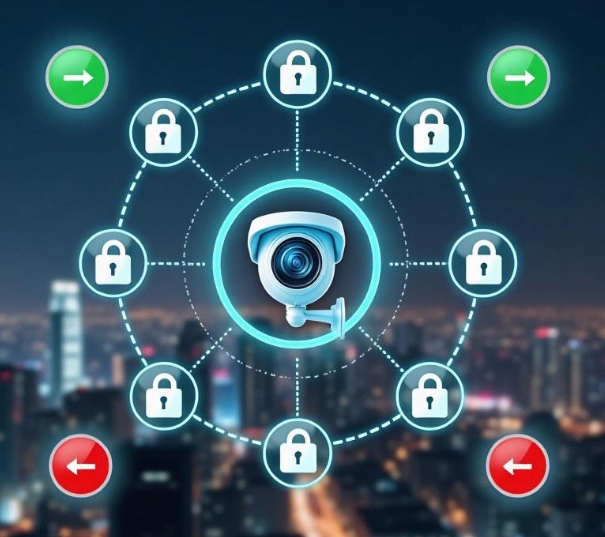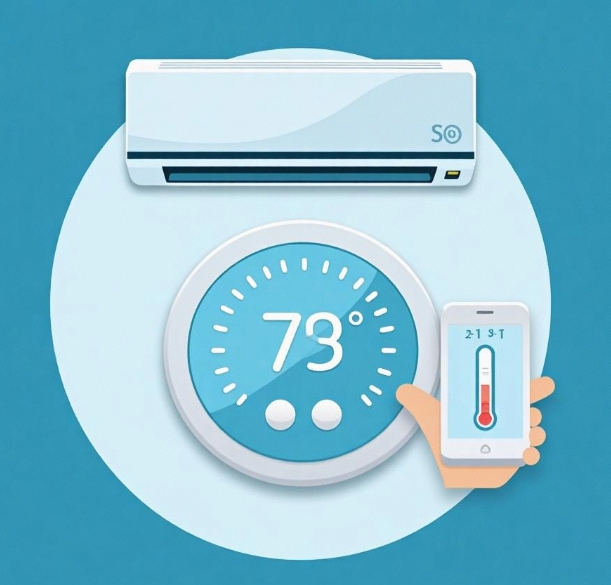Applications and Development Techniques of IoT in Smart Homes
- latest articles
- 1.DApp Development & Customization: Merging Diverse Market Needs with User Experience 2.Analysis of the Core Technical System in DApp Project Development 3.How to achieve cross-chain interoperability in Web3 projects? 4.How does the tokenization of points reconstruct the e-commerce ecosystem? 5.How to Set and Track Data Metrics for a Points Mall? 6.What is DApp Development? Core Concepts and Technical Analysis 7.Inventory of commonly used Web3 development tools and usage tips 8.Development of a Distribution System Integrated with Social E-commerce 9.Six Key Steps for Businesses to Build a Points Mall System 10.What is DApp Development? A Comprehensive Guide from Concept to Implementation
- Popular Articles
- 1.Future Trends and Technology Predictions for APP Development in 2025 2.Analysis of the DeFi Ecosystem: How Developers Can Participate in Decentralized Finance Innovation 3.From Zero to One: How PI Mall Revolutionizes the Traditional E-commerce Model 4.DAPP Development | Best Practices for Professional Customization and Rapid Launch 5.How to Develop a Successful Douyin Mini Program: Technical Architecture and Best Practices 6.Recommended by the Web3 developer community: the most noteworthy forums and resources 7.From Cloud Computing to Computing Power Leasing: Building a Flexible and Scalable Computing Resource Platform 8.Shared Bike System APP: The Convenient Choice in the Era of Smart Travel 9.How to Create a Successful Dating App: From Needs Analysis to User Experience Design 10.From Design to Development: The Complete Process of Bringing an APP Idea to Life
With the continuous advancement of technology, smart homes are no longer a distant dream. More and more households are embracing and enjoying the convenience and comfort brought by smart home technology. The Internet of Things (IoT), as one of the core technologies of smart homes, provides the infrastructure and technical support for their realization. Through IoT technology, smart homes not only enable device interconnectivity but also significantly enhance the quality of life, offering a more convenient, secure, and energy-efficient living environment.
This article will delve into the applications of IoT in smart homes and development techniques, providing valuable insights for smart home enthusiasts and developers.
1. Applications of IoT in Smart Homes
The Internet of Things (IoT) refers to connecting various objects (such as home appliances, sensors, etc.) to the internet through networks, enabling information exchange and data sharing. In smart homes, the core role of IoT is to allow various devices to interact and coordinate with each other, creating an intelligent and automated home environment.
1.1 Smart Lighting Systems
Smart lighting is one of the fundamental applications of IoT in smart homes. Through smart lighting systems, homeowners can adjust the brightness, color, and on/off status of lights via smartphones or voice control. Combined with environmental sensors, smart lighting systems can even automatically adjust brightness based on changes in room lighting or intelligently turn lights on and off according to the user's schedule.
For example, when a user enters a room, sensors detect human presence and automatically turn on the lights; when the user leaves, the lights automatically turn off after a set period to save energy.
1.2 Smart Security Systems
Security systems in smart homes utilize IoT technology to provide comprehensive monitoring of home safety. Through sensors installed on doors and windows, cameras, and smart alarms, family members can monitor the security status of their homes in real-time. IoT technology enables these devices to connect to smartphones or tablets via the internet, allowing users to check their homes and receive security alerts from anywhere.
For example, smart door lock systems can recognize users' fingerprints, passwords, or smartphone apps for unlocking, while recording the time and identity of each unlock to ensure home security. In case of unusual activity, the smart security system automatically sends notifications to the user's phone and can even provide real-time video monitoring through cameras.
1.3 Smart Appliance Control
IoT technology enables home appliances to be controlled remotely via smartphones or voice assistants. For instance, users can use a smartphone app to control the on/off status, temperature settings, and operating modes of appliances such as air conditioners, refrigerators, and washing machines. Through integration with sensors, smart appliances can automatically adjust their operation based on the needs of household members.
For example, when a family member returns home, the smart air conditioner can automatically turn on and adjust to a preset comfortable temperature. Alternatively, temperature sensors in smart refrigerators can remind users about the storage status of ingredients to avoid waste.
1.4 Smart Temperature Control Systems
Smart temperature control systems are another important application of IoT in smart homes. By integrating thermostats with temperature and humidity sensors in the home environment, smart homes can automatically adjust indoor temperature and humidity according to user preferences, providing a more comfortable living experience.
For example, during cold winters, the smart temperature control system can activate the heating before the user arrives home, ensuring a warm indoor environment upon return. In hot summers, the smart air conditioning system can turn on before the user arrives, automatically adjusting the temperature to maintain the most comfortable range.
1.5 Smart Health Monitoring
With increasing health awareness, smart home systems are gradually integrating health monitoring functions. Through IoT technology, users can monitor their health status in real-time and adjust their living environment to promote well-being. For example, smart mattresses can monitor sleep quality, smart air purifiers can adjust their operation based on air quality, and smart scales can help users track weight and body metrics.
1.6 Smart Curtains
Smart curtains are an innovative application of IoT in home environments. By installing smart curtain motors and sensors, curtains can automatically adjust their opening and closing based on factors such as time, light intensity, and temperature. For example, when sunlight is too strong, the curtains will automatically close to protect furniture and skin from UV damage; when night falls, the curtains close to ensure privacy and sleep quality.
2. Techniques for IoT in Smart Home Development
When developing smart home systems, the application of IoT technology requires collaboration across multiple fields, including hardware, software, and networking. Below are some techniques and practical experiences to consider during smart home development.
2.1 Choosing the Right Communication Protocol
The interconnectivity of IoT devices relies on communication protocols. Common IoT communication protocols include Wi-Fi, Bluetooth, Zigbee, and Z-Wave. Selecting the appropriate communication protocol is crucial in smart home development, as different protocols have distinct characteristics in terms of transmission speed, coverage range, and power consumption.
Wi-Fi is suitable for devices that transmit large amounts of data, especially those requiring real-time monitoring and control, such as smart cameras.
Bluetooth is ideal for short-range control, making it suitable for devices like smart door locks and smart lights.
Zigbee and Z-Wave are low-power, low-data-rate wireless communication protocols, making them suitable for sensors, smart plugs, and similar devices.
2.2 Emphasizing Device Interoperability
Devices in smart home systems often come from different manufacturers, so ensuring interoperability between devices is critical. During development, it is essential to ensure that devices of different brands and models can achieve interoperability through standardized interfaces and protocols.
A common approach is to select devices that support open protocols, such as Zigbee or Z-Wave standards, as this facilitates compatibility and integration with other devices.
2.3 Data Security and Privacy Protection
IoT devices collect vast amounts of household data, including user behavior patterns, health status, and device usage. When developing smart home systems, it is imperative to strictly protect user privacy and ensure data security.
Encryption Technology: Use encryption technologies like SSL/TLS to protect data transmission between devices and cloud platforms.
Authentication: Ensure only authorized users can access the smart home system through methods like fingerprint recognition and password protection.
Data Storage: When storing user data, adhere to data protection regulations to prevent data leaks or misuse.
2.4 Providing a User-Friendly Experience
The ultimate goal of smart homes is to provide users with a convenient, comfortable, and secure living environment. Therefore, user experience should be a key focus during development.
Simple and Intuitive Interface: The interface of smart home applications should be straightforward and easy to use, allowing users to set up and control devices effortlessly.
Voice Control and Smart Assistant Integration: Incorporate voice recognition technology to enable users to control home devices easily through voice commands, enhancing the operability of smart homes.
Intelligent Suggestions: Based on user behavior data, smart home systems can offer personalized recommendations, such as automatically adjusting home devices according to the user's daily routine.
2.5 System Scalability
As IoT technology evolves, new devices and functionalities will continue to emerge. Therefore, smart home systems should be designed with future scalability in mind. Adopting modular hardware designs and flexible software architectures allows the system to easily incorporate new devices and features.
For example, smart home systems should support new types of sensors, control protocols, and device platforms to meet ever-changing market demands.
Conclusion
The application of IoT in smart homes has significantly improved our living experiences. From smart lighting and security to health monitoring, IoT has brought us a more intelligent, convenient, and secure living environment. In the development of smart homes, factors such as selecting the right communication protocols, ensuring data security, and optimizing user experience are critical considerations for developers.
As IoT technology continues to advance, smart homes will become even more intelligent and personalized, offering limitless possibilities for future home living. For developers, seizing the opportunities presented by IoT in smart homes is essential to securing a place in this rapidly evolving market.
-

How to Use IoT Development to Enhance Supply Chain Efficiency
With the rapid development of the global economy and the deepening of digital tr···
-

Development and Innovation of the Internet of Things in the Healthcare Sector
With the rapid advancement of information technology, the Internet of Things (Io···
-

Data Storage and Analysis Methods in IoT Development
The Internet of Things (IoT) is one of the most revolutionary innovations in tod···

 Blockchain
Blockchain












